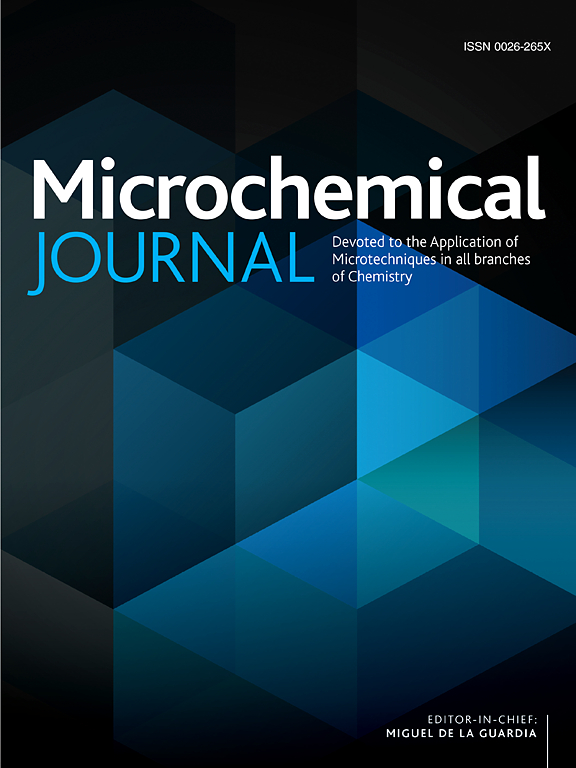PVDF membrane immobilized acetylcholinesterase-based fluorescence biosensor for chlorpyrifos detection
IF 4.9
2区 化学
Q1 CHEMISTRY, ANALYTICAL
引用次数: 0
Abstract
Trace residues of chlorpyrifos (organophosphorus pesticides) pose significant environmental hazards due to their acute insecticidal toxicity. Chlorpyrifos inhibits acetylcholinesterase (AChE), which heightens the risks of neurological disorders. The implications of these interactions underscore the urgent need for detection strategies to mitigate the risks associated with chlorpyrifos exposure. Considering the inherently fragile nature of AChE, a novel composite membrane (PVDF/PDA/PEI) was introduced to immobilize AChE for its excellent simplicity, portability and ease of separation. And a ratiometric fluorescence biosensor based on photoluminescent carbon dots emitting at 468 nm and cobalt oxyhydroxide nanosheets emitting at 568 nm were constructed. The resulting fluorescence ratio at F468/F568 was served as a ratiometric fluorescence signal for AChE assay and chlorpyrifos detection, with a detection limit of 0.103 ng/mL. This study facilitates the precise monitoring of chlorpyrifos levels in real samples, providing a reliable method to detect even trace amounts of this widely used chlorpyrifos. By offering a balance between the activity and stability of fragile AChE, facilitating the utilization of PVDF/PDA/PEI immobilized AChE in the fabrication of a ratiometric fluorescence sensor for the purpose of chlorpyrifos detection. This advancement not only improves detection sensitivity but also contributes significantly to environmental safety and public health monitoring.

求助全文
约1分钟内获得全文
求助全文
来源期刊

Microchemical Journal
化学-分析化学
CiteScore
8.70
自引率
8.30%
发文量
1131
审稿时长
1.9 months
期刊介绍:
The Microchemical Journal is a peer reviewed journal devoted to all aspects and phases of analytical chemistry and chemical analysis. The Microchemical Journal publishes articles which are at the forefront of modern analytical chemistry and cover innovations in the techniques to the finest possible limits. This includes fundamental aspects, instrumentation, new developments, innovative and novel methods and applications including environmental and clinical field.
Traditional classical analytical methods such as spectrophotometry and titrimetry as well as established instrumentation methods such as flame and graphite furnace atomic absorption spectrometry, gas chromatography, and modified glassy or carbon electrode electrochemical methods will be considered, provided they show significant improvements and novelty compared to the established methods.
 求助内容:
求助内容: 应助结果提醒方式:
应助结果提醒方式:


